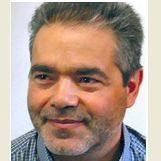Scaffold Materials for Tissue Engineering
A special issue of Materials (ISSN 1996-1944). This special issue belongs to the section "Biomaterials".
Deadline for manuscript submissions: closed (15 February 2019) | Viewed by 86187
Special Issue Editor
Interests: synthesis of powders by different techniques; structural (oxide- and non-oxide-based) ceramics; functional (piezoelectric, ferroelectric, magnetic, etc.) materials; development of materials for optical and energy related applications; development and processing of materials for applications in biomedicine, especially in dentistry, orthopedics and tissue engineering
Special Issue Information
Dear Colleagues,
Research efforts are often driven by real needs for new or better materials, processes or systems that do not satisfactorily fulfil expected/desired roles or functions. The discovery of bioactive glasses (BGs) in the late 1960s, intended to replace inert metal and plastic implants that were not well tolerated by the body, represents a remarkable milestone in the field of synthetic and resorbable bone grafts. This discovery has inspired many other investigations, aiming at further exploring the in vitro and in vivo performances of BGs and other inorganic bioactive materials based on calcium phosphates and or inorganic/organic composites by suitably mixing the inorganic components with biopolymer matrices aiming at better mimicking the mechanical behavior and properties of bone tissues. However, successful tissue engineering strategies typically involve a combination of cells and bioactive factors with an implantable porous biomaterial construct to provide an environment conducive to cell differentiation and proliferation. Several processing techniques might be used to generate the 3D porous structure. Printing methods have recently gained tremendous importance, being increasingly applied to inorganic, polymeric and composite acellular materials. However, some of the most exciting developments in the last years are related to: (i) the bioprinting of cellularized constructs from hydrogels to engineer heterogeneously cellular 3D environments that lead to tissues that can mimic specific organ functions; and (ii) multifunctional devices that include in situ drug release and antibacterial activity. Contributions to this Special Issue on the abovementioned topics, but not limited to them, will be welcome.
Prof. Dr. Jose M.F. Ferreira
Guest Editor
Manuscript Submission Information
Manuscripts should be submitted online at www.mdpi.com by registering and logging in to this website. Once you are registered, click here to go to the submission form. Manuscripts can be submitted until the deadline. All submissions that pass pre-check are peer-reviewed. Accepted papers will be published continuously in the journal (as soon as accepted) and will be listed together on the special issue website. Research articles, review articles as well as short communications are invited. For planned papers, a title and short abstract (about 100 words) can be sent to the Editorial Office for announcement on this website.
Submitted manuscripts should not have been published previously, nor be under consideration for publication elsewhere (except conference proceedings papers). All manuscripts are thoroughly refereed through a single-blind peer-review process. A guide for authors and other relevant information for submission of manuscripts is available on the Instructions for Authors page. Materials is an international peer-reviewed open access semimonthly journal published by MDPI.
Please visit the Instructions for Authors page before submitting a manuscript. The Article Processing Charge (APC) for publication in this open access journal is 2600 CHF (Swiss Francs). Submitted papers should be well formatted and use good English. Authors may use MDPI's English editing service prior to publication or during author revisions.
Keywords
- bioactive bone graft materials
- osteoinduction of hMSC
- porous constructs
- additive manufacturing techniques
- bioprinting






